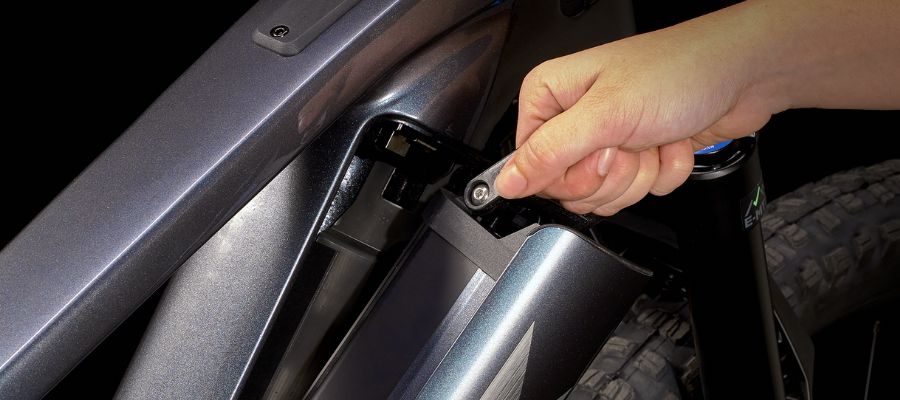
A Guide to E-Bike Battery Maintenance Over Winter
As the weather changes and the temperature begins to drop, it's essential to ensure you consider how this affects the battery on your e-bike. By following this simple advice, you can keep riding over the colder months without any drop in performance or range you would usually achieve.
Let's start with why temperature can have such a significant effect on the battery. Nearly all e-bikes out there use a Lithium battery. This particular type of battery has the lowest discharge rate of all E-Bike batteries, as well as boasting impressive charge cycles.
These electric bike batteries use a gel-like substance to transfer electrical energy from the cells around the battery. When the ambient temperature drops below +5 degrees °C, this gel starts to stiffen up. When this happens, the charge level that the battery can handle (both incoming charge and outgoing charge) is reduced as the gel cannot move as freely as it would at a normal operating temperature.
With this in mind, it makes sense that the colder the temperature becomes, the stiffer the gel becomes, and the charge reduces further.
As even the slightest temperature changes can affect the battery, it can be common for riders to find that they get less range from a single charge over the winter than they would in the spring or summer. However, by following the below steps, the effect can be minimized.

Store The Battery Inside
If the bike is stored in a cold place overnight, such as an outside shed or garage, the battery gets cold. During this time, the gel inside will stiffen up and therefore reduce the range available - especially inconvenient if you planned a long-distance morning ride or commute.
We understand it's not convenient for everyone to store the E-bike inside; therefore, we advise removing the battery from the bike and bringing the battery into the house when not in use.
The bike itself can remain in the shed or garage, as it's only the battery that's affected by the cold. Then whenever you want to ride, re-fit the battery as normal.
Charge The Battery Inside
If the battery is charged in a cold environment, the charge won't move as freely around the battery and will therefore struggle to achieve full capacity. Not only will this affect the range as the battery will never reach a full charge, but it can also reduce the lifespan of the battery.
Therefore, whenever you need to charge the battery, we recommend removing it from the bike and placing it on charge indoors. It's also worth pointing out that the battery should be at room temperature before charging it, so if you've just come back from a cold ride, let the battery rest inside for several hours before plugging it in.
Remove The Battery If Unused
If riding through the winter months isn't your thing, and the bike will be unused for a period of time over winter, then we'd recommend removing the battery from the bike and storing it indoors at room temperature.
For optimum battery care, once removed, charge it to around 60% capacity and then store it inside until you're ready to ride again.

Cleaning The Bike
You're bound to encounter more rain and dirt during the winter months. This isn't an issue as the bikes are designed to protect the battery in the event of a downpour. However, you may need to clean the bike once the ride is complete.
We don't recommend using a pressure washer on our e-bikes, as this can damage the connections and force water inside areas it shouldn't get into. Instead, wash the bike by hand (we'd suggest doing this with the battery installed to ensure the terminals are covered) and then thoroughly dry the bike before removing the battery to recharge or store it.
Practice Good Battery Maintenance
While not so much linked with temperature, it is good practice to run the battery completely flat at least once every three months. This will help to keep the maximum charging capacity as high as possible.
Don't Worry About The Cold When Riding
Despite what we've said so far, don't be afraid of using your bike during the cold weather!
Lithium-ion batteries will warm up slightly when in use and that warmth will help keep the battery above 5 degrees. It's important to highlight that the cold cannot damage the battery; our advice will help to get the most from your battery life.
Electric bikes are designed to withstand all the elements of winter, so don't let it stop you from enjoying your bike out on the roads. Riding in the cold is fine and will do no lasting harm to the battery's health.
By following this advice, you should be able to ride year-round with little change to the range you would expect to receive. But if you do forget any of the above, it's important to remember that cold weather does no lasting damage to the battery at all - it has a temporary effect, but it will go back to normal.
